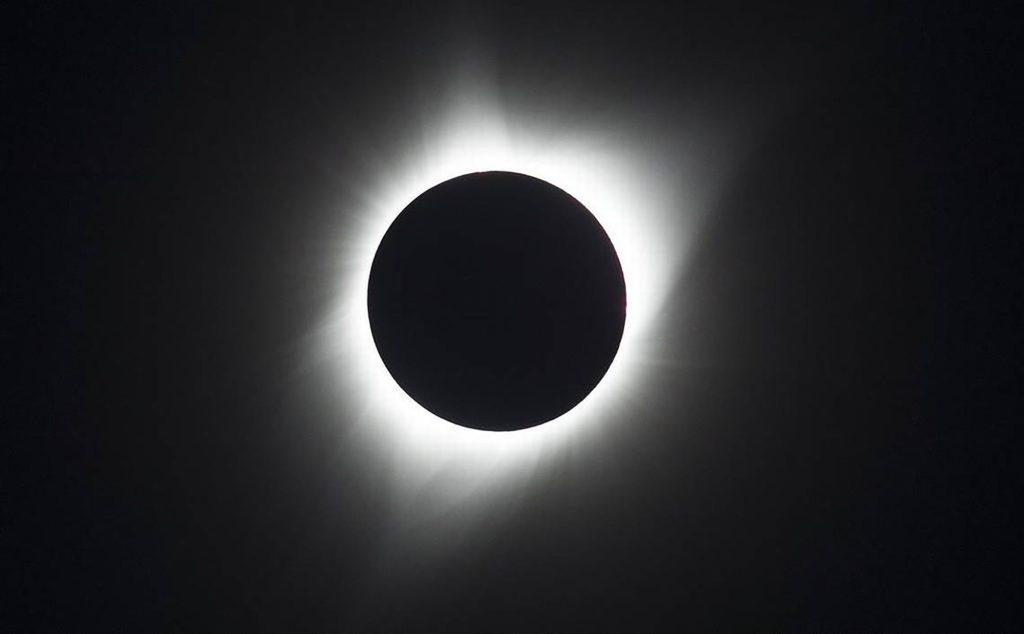Monday will be the first time a solar eclipse is visible over the United States since 2017.
Although eastern Pennsylvania is not in the path of totality, people there will see approximately 92% coverage during the eclipse that afternoon.
The event starts around 2:08 p.m. in the area, and by 3:23 p.m., the moon will cover about 92% of the sun, as stated by NASA.
Gary Becker, a former planetarium director at Allentown School District in the Lehigh Valley and now an astronomy teacher at Moravian University, estimated that it will last about 10 minutes.
Apart from observing the event during the short total phase, which won't be visible there, it's not safe to observe the eclipse without some form of protection. Those who wish to observe it should be ready and wear special eclipse glasses or use other safe methods of observation.
Becker pointed out, “This is a dangerous eclipse all the way through.”
How to watch the eclipse
Special glasses designed for viewing the eclipse may be bought. According to NASA, eclipse glasses are thousands of times darker than regular sunglasses. It's unsafe to watch the eclipse with sunglasses.
Experts also advise against looking at the sun through a lens, telescope, binoculars, or any other device while wearing eclipse glasses, as the concentrated rays will damage the filter and cause eye injuries, as per NASA.
Those interested in viewing the eclipse may also do so through indirect methods, such as optical or pinhole projection. These methods can be found at eclipse.aas.org/eye-safety/projection.
The Pennsylvania attorney general’s office cautioned residents about scammers selling fake glasses before the eclipse. Viewing glasses have special filters that fake ones lack. Authorities stated that the eclipse glasses should bear the safety standard certification number ISO 12312-2 on the frame. Further information is available at eclipse.aas.org/eye-safety.
Anywhere the sun is visible will be a good location to view the eclipse, according to Becker.
Some school districts in the region will dismiss early before the eclipse, while others will continue with normal full days.
What to anticipate in eastern Pennsylvania
The most recent visible solar eclipse in the region was in 2017 when 74% coverage was visible in the area.
On Monday, the colors outside should be slightly warmer than usual, according to Becker. There will likely be warmer hues and sharper shadows, he added. It will have a “wonky look,” he said.
Weather won't be a problem. After several days of rain this week, Monday is expected to be clear. The National Weather Service stated it should be sunny with a high of 60 during the eclipse.
The solar eclipse with the most coverage visible in our area occurred nearly 100 years ago. Becker mentioned that there was 98% coverage during a solar eclipse in 1925.
The next total solar eclipse visible from the contiguous United States will be in 2044, as per NASA.
If you want a chance to witness a total eclipse from our region, however, you’ll have to wait much longer. That won’t occur before May 1, 2079, when a large area in southeastern Pennsylvania will see a complete eclipse shortly after sunrise on that day.
In a total eclipse, the sky gets dark, similar to dawn, and the sun’s outer atmosphere can be seen by people in the path of totality, according to NASA.
In the United States, the path of totality for Monday’s eclipse extends from parts of Texas to Maine. The path mainly avoids Pennsylvania except for the northwestern area of the state.
Areas of Pennsylvania within the path of totality
According to NASA, Crawford, Erie, Mercer, and Warren counties will have the total eclipse around 3:20 p.m.
Becker, who has observed total eclipses previously, mentioned that watching them with other enthusiasts is an amazing experience. He likened the moment of the eclipse to when the Philadelphia Eagles won the Super Bowl in 2018 and the subsequent cheers from fans.
He stated, “It’s like someone has just achieved something miraculous like that.”
Pennsylvania Gov. Josh Shapiro confirmed that various state agencies are ready for the eclipse and the potential travel disruptions it may bring on Monday.
According to a news release from Shapiro’s office, the Pennsylvania Turnpike Commission will keep traffic lanes open on Interstate 79 for travel to and from Erie. State police will also clear disabled vehicles from interstates in the region and post troopers at each exit to maintain traffic flow.
Individuals gathered at rest stops to observe the eclipse will be requested to relocate.
PennDOT initiated a webpage, 511pa.com/eclipse24/, to help visitors find routes to their destinations during the event.









